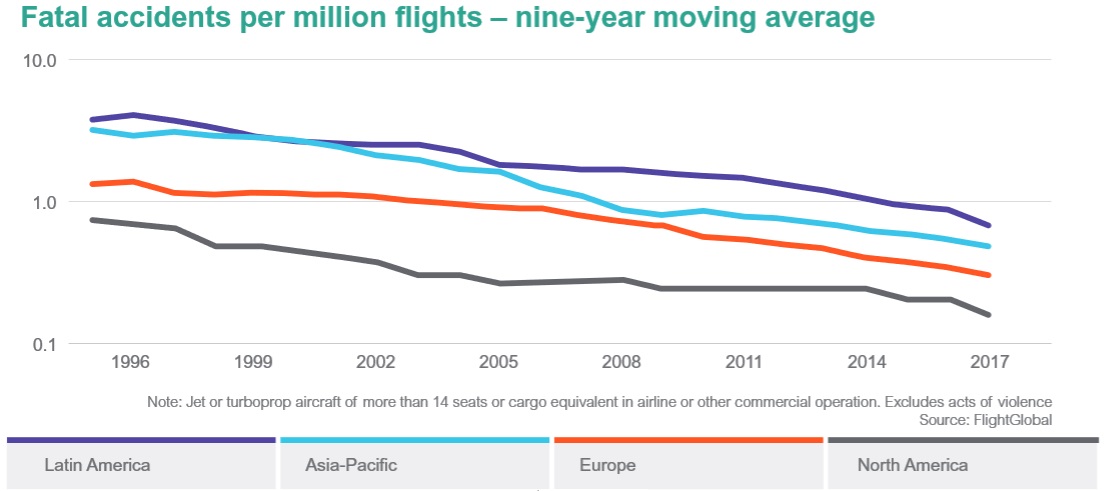The safety performance of Latin America's airlines is always a key area of focus for the region's airline association ALTA. When 2016 dawned, Latin America had not seen a fatal jet airliner crash for a couple of years. By the end of that year, however, there had been two such accidents, and when this article was sent to press there had been none so far this year. The question is, do those two sudden accidents change anything?
According to ICAO's Pan American Regional Aviation Safety Group (RASG-PA), Latin America needs to continue applying its long-term strategy, not react to the accident figures for a single year.
The seventh and latest edition of the RASG-PA regional Air Safety Report, which will incorporate figures for 2016, is still being drafted, but its themes were discussed at the executive steering group meeting in Lima, Peru in May. The publication delay is the result of an effort to extract comparative metrics that will identify indicators of change, hopefully resulting from the progressive implementation of regional safety strategy so far.
The Group has confirmed that the highest risks to commercial airline operations in the Latin American and Caribbean regions remain loss of control in flight, runway excursions, controlled flight into terrain and mid-air collisions, although the risk level of all these except the last is reducing.
The two fatal accidents last year involved a LaMia Bolivia-chartered BAe Systems Avro RJ85 that crashed from lack of fuel on approach to Medellin, Colombia, and a Aerosucre Colombia Boeing 727-200 freighter that sustained damage by overrunning runway 25 at Puerto Carreno during take-off, rendering it uncontrollable in the air. Neither accident happened to be in one of those identified high-risk categories.
LINGERING CONCERNS
ICAO reluctantly records that there are still 10 states in RASG-PA that have achieved a compliance rate of lower than 60% with ICAO standards and recommended practices (SARPs), and the issues of most concern are inadequate qualification and training of technical personnel, together with inadequate surveillance of air navigation services and aerodromes. These findings are the results of audits of states' aviation infrastructure carried out under ICAO’s Universal Safety Oversight Audit Programme (USOAP). A result is not considered acceptable if effective implementation of SARPs is found to be lower than 80%.

The latest accident trend figures from FlightGlobal for the Latin America region show that its safety performance, based on the number of fatal accidents per million flights, is converging with that of other world regions, but is still behind (see graph above). The fatal accidents included are those since 1990 for airline and commuter airline-operated jet or turboprop airliners of more than 14 passenger seats – or their cargo equivalent – and the figures exclude crashes resulting from deliberate acts of violence.
FlightGlobal Ascend director of air safety and insurance Paul Hayes explains: "In the nine-year period ending 1998, Latin America had a fatal accident rate of 3.35 per million flights. This was 2.4 times worse than the overall world rate at the time. For the period ending 2015, however, Latin America’s fatal accident rate was 0.93 per million – 3.6 times better. But the world had also improved during this time and its rate is now 0.57, an improvement of 2.5 times. LatAm is now 1.6 times worse than the world average, but it is slowly catching up."
Within the region itself there is a considerable range of safety performance quality, Hayes points out. Brazil now more or less equals the world average, while Mexico betters it.
Source: Flight Daily News


























